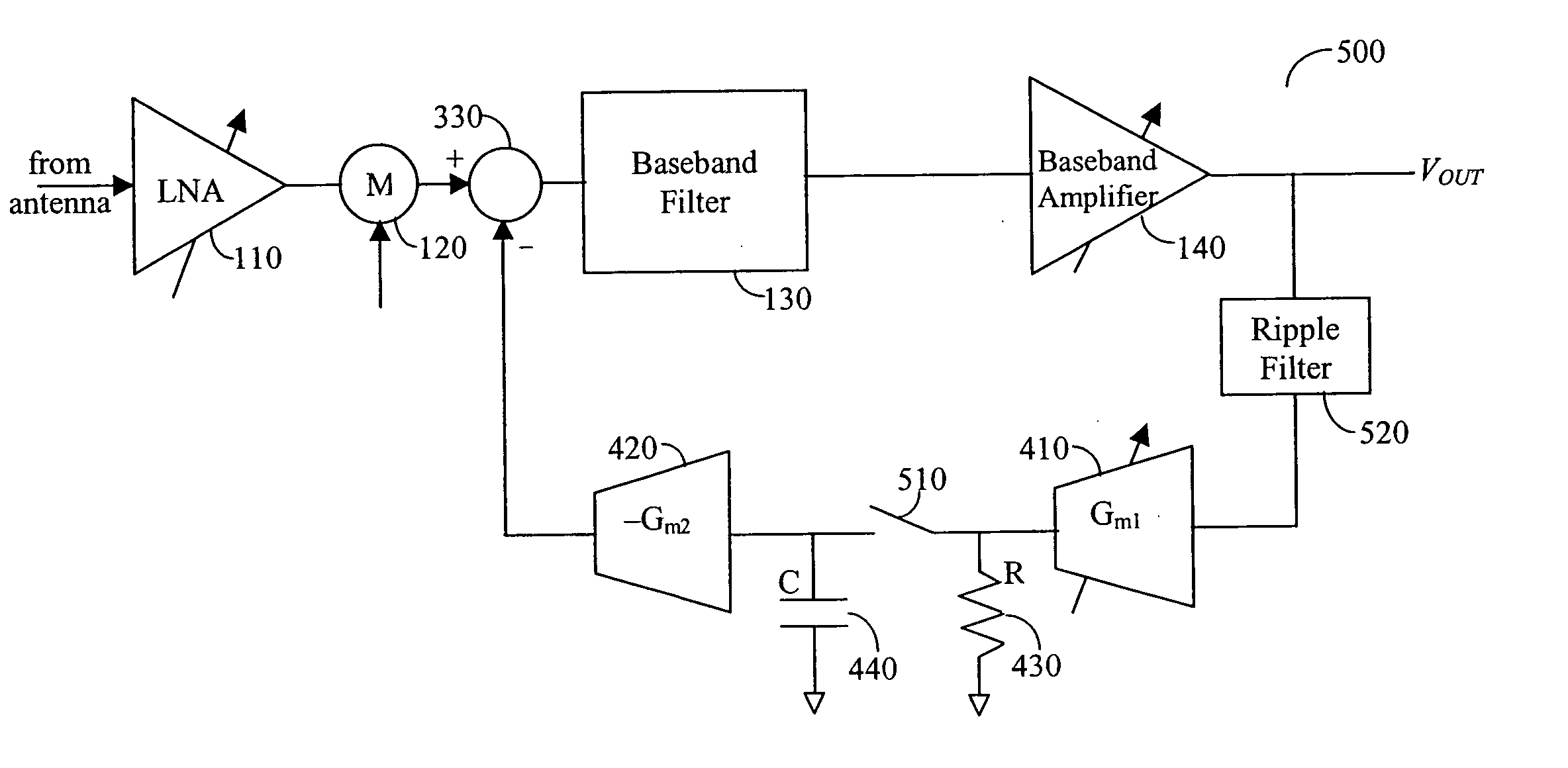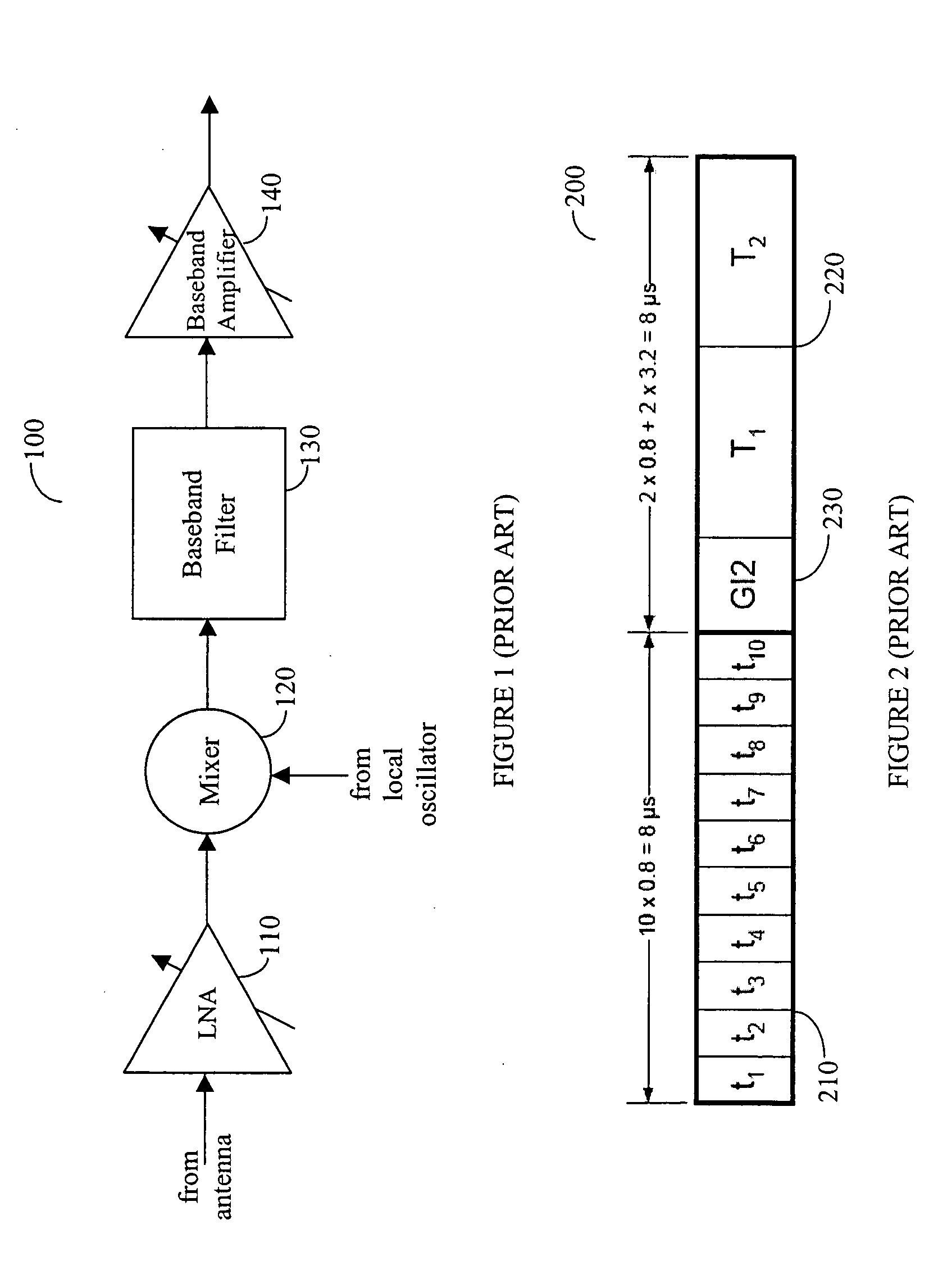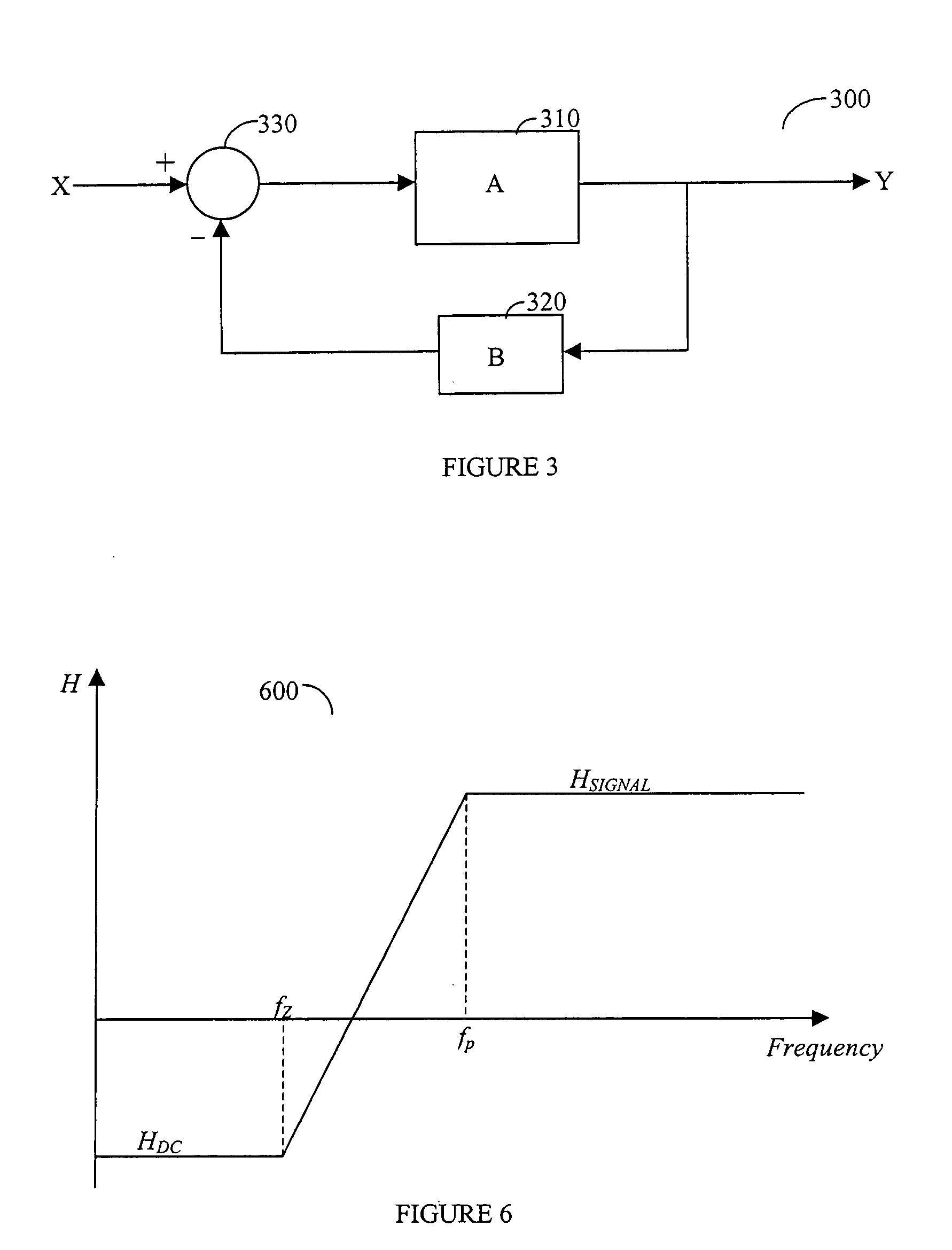Apparatus and methods for eliminating DC offset in a wireless communication device
a wireless communication device and wireless communication technology, applied in the direction of dc level restoring means or bias distortion correction, digital transmission, baseband system details, etc., can solve the problem of parasitic direct-current (dc) quantity, especially severe problem, unpredictable phase differen
- Summary
- Abstract
- Description
- Claims
- Application Information
AI Technical Summary
Problems solved by technology
Method used
Image
Examples
Embodiment Construction
[0015] The present invention comprises a direct current (DC) servo loop that samples at least a portion of the output signal of system 100 shown in FIG. 1, and after amplification, returns it in a negative phase to the input of baseband filter 130. However, it is essential to use different gains for the case of the near DC frequency, i.e., around zero Hertz, while providing a significant gain around the signal frequency band. By adjusting the gain of the feedback loop for the two different frequency ranges, the DC offset is reduced while the signal frequency remains at a desired level.
[0016] In the description to follow, the invention will be described generally, and for purposes of illustration and not limitation, more specifically with respect to orthogonal frequency division multiplexing (OFDM), and at times most specifically in accordance with the IEEE 802.11a standard. However, this should not be viewed as limiting the use of the disclosed invention in such cases as Hiperlan2,...
PUM
 Login to View More
Login to View More Abstract
Description
Claims
Application Information
 Login to View More
Login to View More - R&D
- Intellectual Property
- Life Sciences
- Materials
- Tech Scout
- Unparalleled Data Quality
- Higher Quality Content
- 60% Fewer Hallucinations
Browse by: Latest US Patents, China's latest patents, Technical Efficacy Thesaurus, Application Domain, Technology Topic, Popular Technical Reports.
© 2025 PatSnap. All rights reserved.Legal|Privacy policy|Modern Slavery Act Transparency Statement|Sitemap|About US| Contact US: help@patsnap.com



